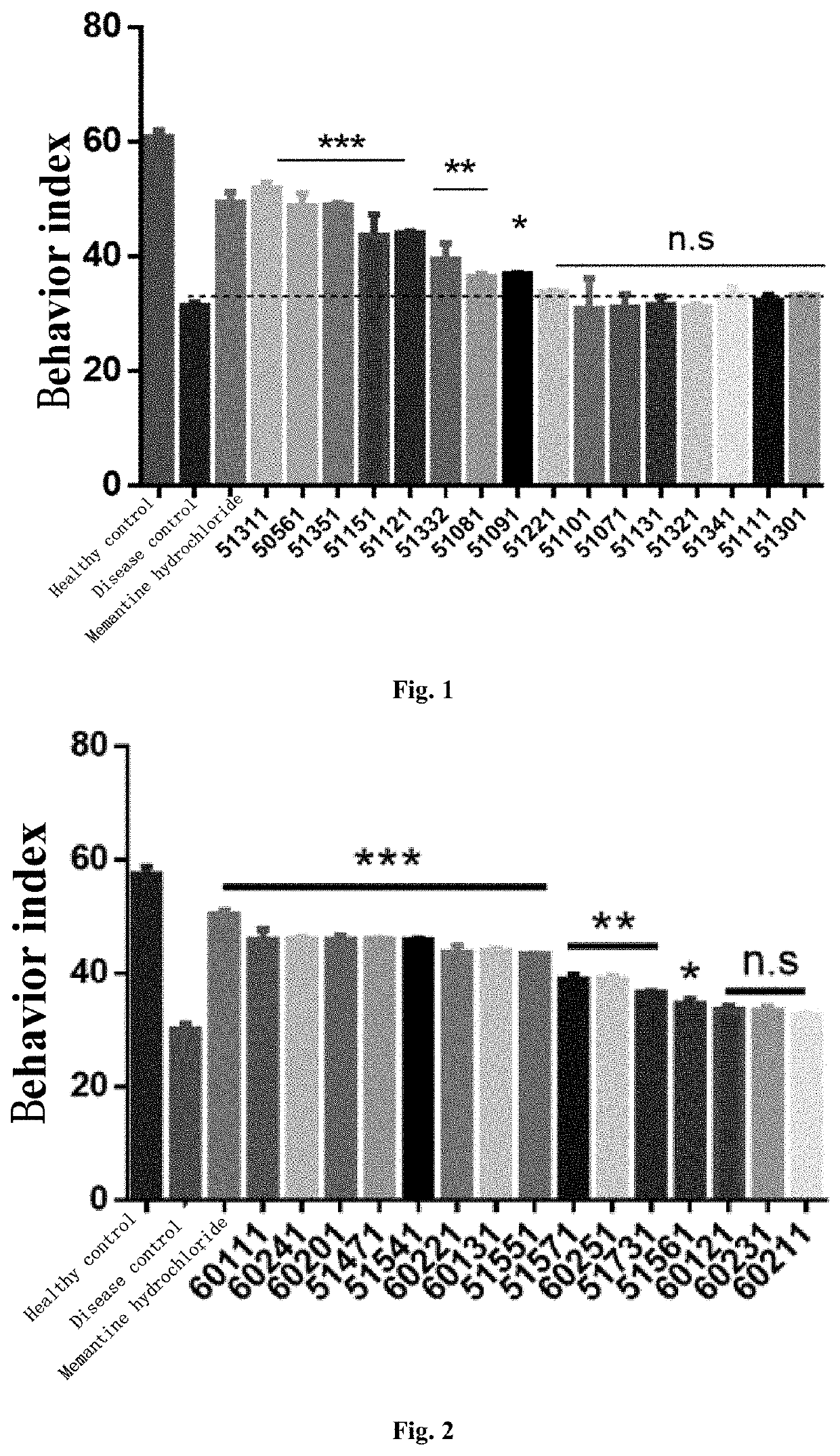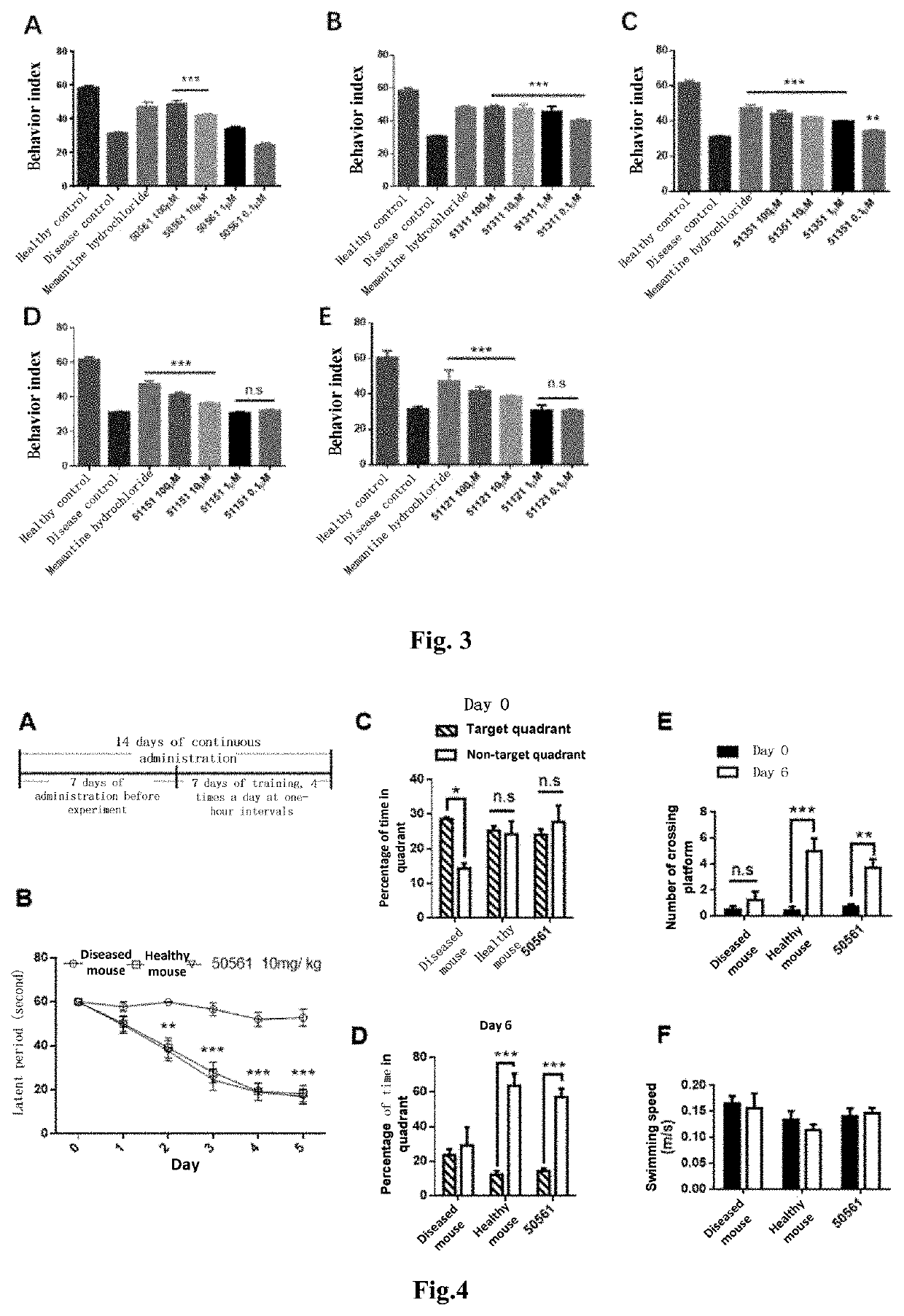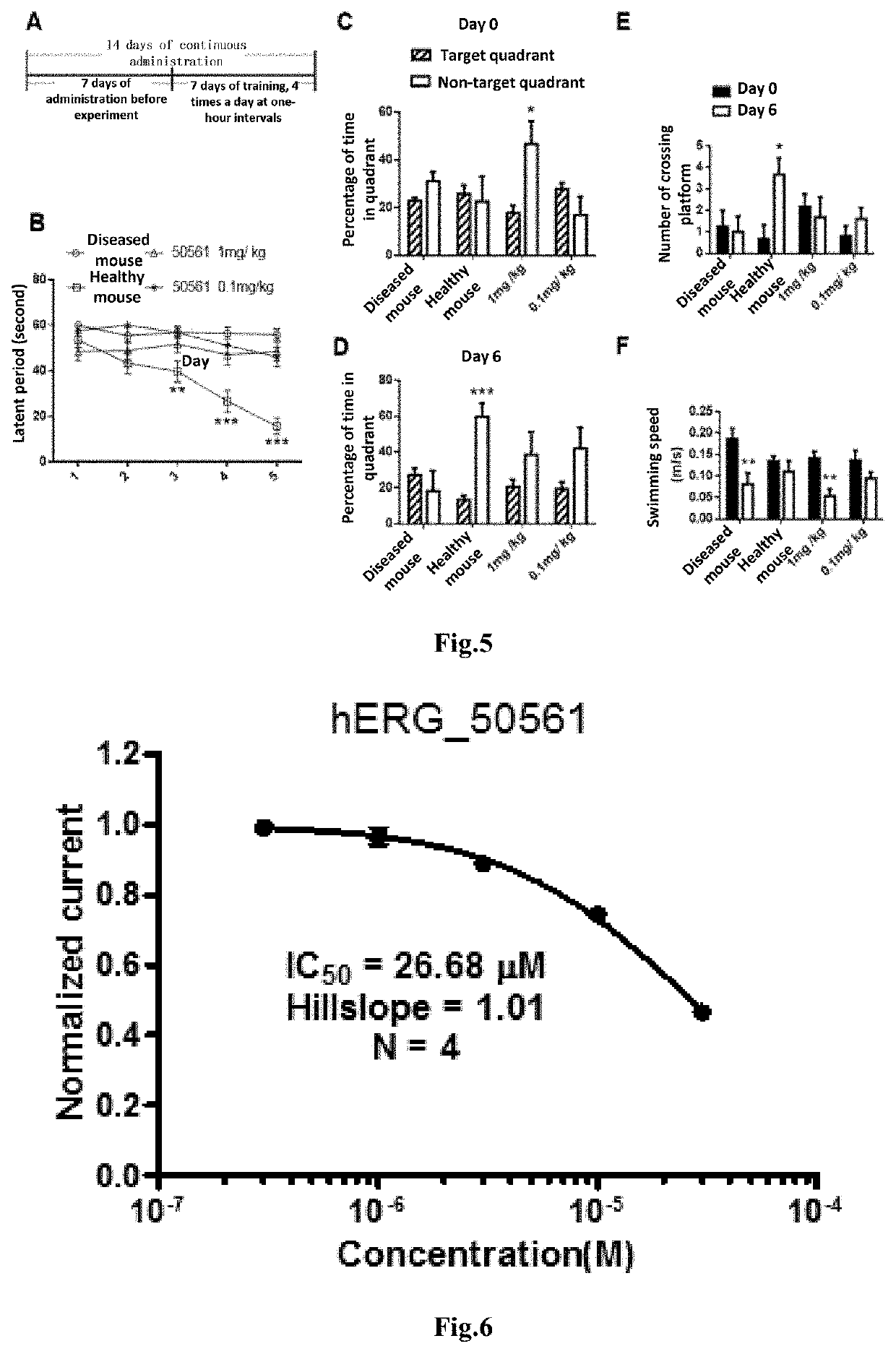4-oxo-alkylated tetramic acid compound, and preparation method thereof
a technology of tetramic acid and alkylated tetramic acid, which is applied in the field of pharmaceuticals, can solve the problems of reducing the therapeutic effect of tetramic acid, causing severe pain, and causing temporary relief of disease symptoms, and achieves no mutagenicity, high safety, and saving the memory of animal models
- Summary
- Abstract
- Description
- Claims
- Application Information
AI Technical Summary
Benefits of technology
Problems solved by technology
Method used
Image
Examples
example 1 preparation
of Compound
[0040]
50561
1.1 Preparation of
[0041]
Intermediate 1
[0042]L-phenylalanine (20 g, 121.07 mmol) was dissolved into 500 mL of a mixture solution of tetrahydrofuran and water (v / v 1:1), followed by stirring for 10 minutes in ice bath. Sodium hydroxide (10.7 g, 266.4 mmol) and di-tert-butyl dicarbonate (29.1 g, 133.2 mmol) were added in batches, followed by 10 hours of stirring at room temperature. TLC monitoring showed that the reaction was completed. Tetrahydrofuran was removed by reduced pressure evaporation, and 500 mL of dichloromethane was added. 2N hydrochloric acid solution was added dropwise under stirring until the water layer had a pH value of about 5. An organic layer was separated, washed once with 200 mL of saturated brine, and dried with anhydrous magnesium sulfate. Filtration was performed, and the solvent was removed by reduced pressure evaporation to obtain a crude product, with a yield of 99%. A next reaction could be carried out without further purification.
1....
example 2 preparation
of Compound
[0051]
51121
2.1 Preparation of
[0052]
50951, Intermediate 16
[0053]The same synthesis method as for intermediate 15 was used, but 2-fluorobenzyl bromide was used to replace 4-fluorobenzyl bromide to prepare intermediate 16, as a colorless oily substance (259 mg, yield: 65%). Molecular weight: 397.45.1H NMR (400 MHz, CDCl3) δ 7.38 (m, 2H), 7.18 (m, 5H), 6.99 (m, 2H), 4.95 (m, 3H), 4.70 (s, 1H), 3.43 (dd, J=13.9, 4.7 Hz, 1H), 3.13 (d, J=13.9 Hz, 1H), 1.59 (s, 9H). 13C NMR (100 MHz, CDCl3) δ 174.67, 168.62, 160.93 (d, J=249.0 Hz), 149.46, 134.13, 131.27 (d, J=8.3 Hz), 130.75 (d, J=3.2 Hz), 129.62, 129.62, 127.03, 124.54 (d, J=3.7 HZ), 121.43 (d, J=14.4 Hz), 115.83 (d, J=21.1 Hz), 96.09, 82.65, 67.12 (d, J=4.2 Hz), 60.34, 35.44, 28.27. 19F NMR (376 MHz, CDCl3) δ−117.44.
2.2 Preparation of Compound
[0054]
51121
[0055]Intermediate 16 (402 mg, 1.01 mmol) was used as raw material and the same synthesis method as in Example 1 was adopted to prepare 258 mg of the white solid of Example 2 w...
example 3 preparation
of Compound
[0056]
51131
3.1 Preparation of
[0057]
50941, Intermediate 17
[0058]The same synthesis method as for intermediate 15 was adopted, but 3-fluorobenzyl bromide was used instead of 4-fluorobenzyl bromide to prepare intermediate 17, a colorless oily substance (158 mg, yield: 40%). Molecular weight: 397.45. 1H NMR (400 MHz, CDCl3) δ 7.37 (m, 1H), 7.21 (m, 3H), 7.04 (m, 5H), 4.91 (s, 1H), 4.88 (m, 2H), 4.74 (m, 1H), 3.43 (dd, J=14.0, 5.4 Hz, 1H), 3.18 (dd, J=14.1, 3.0 Hz, 1H), 1.60 (s, 9H). 13C NMR (100 MHz, CDCl3) δ 174.76, 168.59, 163.00 (d, J=247.3 Hz), 149.50, 136.62 (d, J=7.5 Hz), 134.31, 130.58 (d, J=8.3 Hz), 129.61, 128.41, 127.17, 123.40 (d, J=3.0 Hz), 115.97 (d, J=21.0 Hz), 114.84 (d, J=22.2 Hz), 96.40, 82.83, 72.42 (d, J=2.0 Hz), 60.42, 35.69, 28.33. 19F NMR (376 MHz, CDCl3) δ−111.95.
3.2 Preparation of Compound
[0059]
51131
[0060]Intermediate 17 (308 mg, 0.77 mmol) was used as raw material and the same synthesis method as in Example 1 was adopted to prepare 229 mg of the white...
PUM
| Property | Measurement | Unit |
|---|---|---|
| temperature | aaaaa | aaaaa |
| molar ratio | aaaaa | aaaaa |
| diameter | aaaaa | aaaaa |
Abstract
Description
Claims
Application Information
 Login to View More
Login to View More - R&D
- Intellectual Property
- Life Sciences
- Materials
- Tech Scout
- Unparalleled Data Quality
- Higher Quality Content
- 60% Fewer Hallucinations
Browse by: Latest US Patents, China's latest patents, Technical Efficacy Thesaurus, Application Domain, Technology Topic, Popular Technical Reports.
© 2025 PatSnap. All rights reserved.Legal|Privacy policy|Modern Slavery Act Transparency Statement|Sitemap|About US| Contact US: help@patsnap.com



